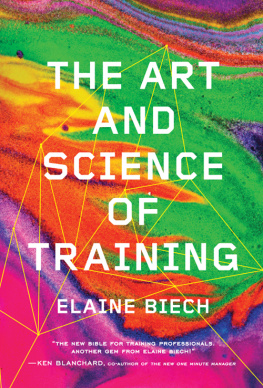At Home With Computers
M ATERIALIZING C ULTURE
Series Editors: Paul Gilroy, Michael Herzfeld and Danny Miller
First published 2002 by Berg Publishers
Published 2020 by Routledge
2 Park Square, Milton Park, Abingdon, Oxon OX14 4RN
605 Third Avenue, New York, NY 10017
Routledge is an imprint of the Taylor & Francis Group, an informa business
Elaine Lally 2002
All rights reserved. No part of this publication may be reproduced or transmittedin any form or by any means, electronic or mechanical, including photocopying, recording, or any information storage or retrieval system, without prior permission in writing from the publishers.
Notice:
Product or corporate names may be trademarks or registered trademarks, and are used only for identification and explanation without intent to infringe.
Library of Congress Cataloging-in-Publication Data
Lally, Elaine.
At home with computers / Elaine Lally.
p. cm. (Materializing culture, ISSN 1460-3349)
ISBN 1-85973-561-4 (pbk.) ISBN 1-85973-556-8
1. Computers Social aspects. 2. Information superhighway Social
aspects. I. Title. II. Series.
QA76.9.C66 L355 2002
004-dc21
2002000063
British Library Cataloguing-in-Publication Data
A catalogue record for this book is available from the British Library.
Typeset by JS Typesetting Ltd, Wellingborough, Northants.
ISBN 13: 978-1-859-73556-5 (hbk)
This book had its origins in a doctoral thesis written at the University of Western Sydney (initially in the Department of Media and Cultural Studies, and subsequently in the School of Cultural Histories and Futures, following a university restructure). I would like to thank my PhD supervisors, Greg Noble and Zo Sofoulis for challenging me to deepen my understanding of the phenomena I was investigating, to broaden my knowledge of the existing research and clarify the expression of my ideas. I am also grateful to the examiners of the thesis for their generous insights and feedback, which have enriched the present work. I would also like to thank a number of colleagues and friends who have acted as intellectual sounding boards, critical readers and motivators: Daniel Miller, Mandy Thomas, Fiona Allon, Helen Grace, Amanda Wise, Amanda Little, Jane Hobson, Lisa Law, Tanja Dreher, Sharon Chalmers and Joy Stevens. I am particularly grateful to len Ang for creating the stimulating intellectual environment of the Institute for Cultural Research at the University of Western Sydney, from which my research has benefited greatly.
This research would not have been possible without the input of the people who were interviewed for the study: although they must remain anonymous, I would like to thank them all for their generous contribution.
Finally, many of the observations about the everyday negotiations of domestic life which have found their way into this book emerged embryonically through my own home life. I am profoundly grateful to my children Holly and Hugh Evans and especially to my partner Paul Evans for supporting and enabling this process.
one
Introduction
Indeed, things are perhaps the most faithful witnesses of all, and in their fidelity to us they function as extensions of ourselves, reflections and echoes of who we are, were, and will become. Those things in your room, for example, those simple, ordinary things mirror who and what you are, and situated in that room they give a shape to its space, they form it into a place, they outline a world Staying in their place, they give us our place, and without such things in our lives we would have no place at all. (Romanyshyn 1989: 1934)
Computers are, on the one hand, technologies that are profoundly reshaping the world around us and powerful cultural symbols of futurity, and, on the other hand, they are concrete elements of everyday life and personal items which can be bought and owned by householders. As a highly technological object, the home computer takes on an association with processes of globalization and sociotechnical development, and is symbolically linked with imaginaries of the future. As commodity, the home computer is embedded in contemporary production and consumption processes, and its acquisition is generally a contribution to a households home-building, its ongoing project of maintenance and reproduction. As an everyday domestic object, the home computer is distinguished by its technological character, but must also find its place among a variety of other kinds of household objects, many of which are not normally thought of as technologies.
This book explores the social life of the computer in contemporary domestic life, based on interviews with the members of computer-owning households in western Sydney. It explores how such objects move from anonymous and alien commodities to become powerfully integrated into the lives of their users. It is centrally about technology and home-building, but the conceptual thread which links these is that of ownership, considered as an activity and a relationship, which is by its very nature complicated, multilayered, even at times contradictory.
Ownership is seen as an activity, rather than as an attribute. This notion is derived from Simmel (1990: 3036): our relationship with our personal possessions is not static, but is constituted in and through the ongoing activities of our everyday lives. Such relationships of ownership between people and their personal domestic possessions are constructed and maintained through the incorporation of these objects into the times and spaces and patterns of activity of the household, a complex process which may take place over an extended period of time. In other words, ownership is explored as living with things (Dant 1999), which occurs within the domestic arena, often in negotiation between household members, rather than in terms of a legal concept of rights.
It is therefore not just about appropriating objects to the self, but is about how we make ourselves at home in our everyday environments, how we make them habitable and comfortable, and use objects to manage the social world. In the contemporary world, technological objects play an important part in making our everyday living spaces habitable, and increasingly in mediating social relationships and cultural forms.
Information Technology in the Home
High tech commodities such as the home computer are important contemporary cultural forms. Both symbolic and material, technological objects are complex and multifaceted in use, and can give us insights which are applicable across a broad range of contemporary domestic objects. They are brought into the domestic space as mass-produced objects, but they also provide a point of articulation into the outside world, through the channel that they establish into the home for mass media and other messages.
This dual role of information and communication technologies has been referred to as their double articulation (Morley and Silverstone 1990). However, many household objects which are not normally thought of as information and communication technologies (such as books and newspapers) are also doubly articulated; also, a variety of household objects act as information storage, organization and retrieval technologies (filing cabinets, the front of the fridge, notice-boards and so on). Although it is an information and communication technology in the conventional sense, the home computer is also a domestic object which interacts with the information management and communication functions of other domestic objects such as the dining room table (a common homework workstation). With some household objects the home computer has a collaborative relationship. With others the relationship is competitive, and indeed some objects are being displaced (in the sense of a relocation, rather than a supplanting) by the use of a computer in the home (just as the domestic role of radio changed with the introduction of television). Although new technologies displace earlier ones, that displacement is neither complete nor simple.














